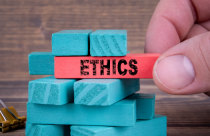Should Retractions Come with a Penalty?

What Is a Retraction?
The International Committee of Medical Journal Editors (ICMJE) makes a distinction between three types of responses to questionable articles or papers:
- Corrections – such as typos or errors in mathematical calculations or statistical analysis. On the assumption that these are just author errors, the corrected article or paper is published with a link to the original article.
- Expressions of Concern – usually applied when there are concerns about the integrity or authorship of the work. This label is usually taken as an indication that the journal has started an investigation into the veracity of the work, but since such investigations can take years to complete, the label serves as a “buyer beware” warning for other researchers.
- Retraction – a formal withdrawal of a previously published article from a journal in addition to a “Retracted” watermark stamped on the online PDF version.
How Rare are Paper Retractions?
Academic Publishing has come to accept the existence of a rising tide of retractions over the last decade, due primarily to the increased availability of technological tools to catch scientific misconduct, and of greater concern, an increased perception of the pressure to “publish or perish.” However, a study by Van Noorden at the Web of Science in 2011 estimated that retractions occur at a rate of only 0.02%, or about 2 in every 10,000 published papers. If that ratio doesn’t seem like a “rising tide,” it’s important to remember that a retraction is a last resort, and in many cases, the evidence is inconclusive as to whether the error was accidental or deliberate.
A Wall Street Journal article, also in 2011, commissioned a report from Thomson Reuters that documented a rise in retractions from 22 in 2001 to 339 in 2010—an increase of 1540%. However, with a corresponding increase in published articles of 44% over the same period, the “rising tide” seems to struggle against the facts, especially since much of that increase in retractions could also be explained by better detection technology that did not exist in 2001. What does draw attention is when journals are forced to announce multiple retractions from the same journal when a researcher’s entire block of work is found to be flawed.
Everyone Suffers
The Committee on Publication Ethics (COPE) states in their retraction guidelines that the purpose of a retraction is to protect the integrity of scientific literature, not to tarnish the name of the author. However, in reality, a retraction is damaging to all parties:
- The reputation of the journal is damaged for failing to catch a spurious piece of research work prior to publication. Even one retraction will cast doubt as to how many other flawed articles have been published and are yet to be exposed.
- The reputation of the author is damaged irrespective of the ultimate reason for the retraction. Scientific misconduct is obviously the worst reason and usually results in termination of employment, but even the lesser charge of unintended errors still reflects badly on the author in terms of poor professional practice.
- The reputation of the author’s institution is damaged since the retraction reflects poor administrative oversight (hence the termination).
- The academic publishing industry as a whole also suffers, since so much of the research work that is published is founded on trust in the integrity of the researchers and the quality of their workmanship.
Does the Punishment Fit the Crime?
Many researchers would argue that the loss of reputation alongside a subsequent loss of citation ranking as peers avoid your other published work, should be enough of a penalty. Where conclusive evidence of scientific misconduct is found, termination of employment would be valid. However, when we find instances of researchers deliberately refusing to respond to requests for further information from journals that are investigation questionable papers, it does seem that the current threat of loss of reputation isn’t perceived as much of a penalty.
One would think that for all the hard work that goes into building a solid academic reputation, any potential damage to that reputation would be seen as punitive. Unfortunately, many of the worst transgressors for article retraction commit the crime in order to expedite the rise of their reputation, which would suggest that it doesn’t hold as much value as it does for those who came up the hard way.










your web site is highly informative
Hi Anjili,
Thank you for the feedback. We are glad you found our website informative. You can also check through our free resources section under the following link: https://www.enago.com/academy/category/free-resources/ for other informative resources covering academic publishing.